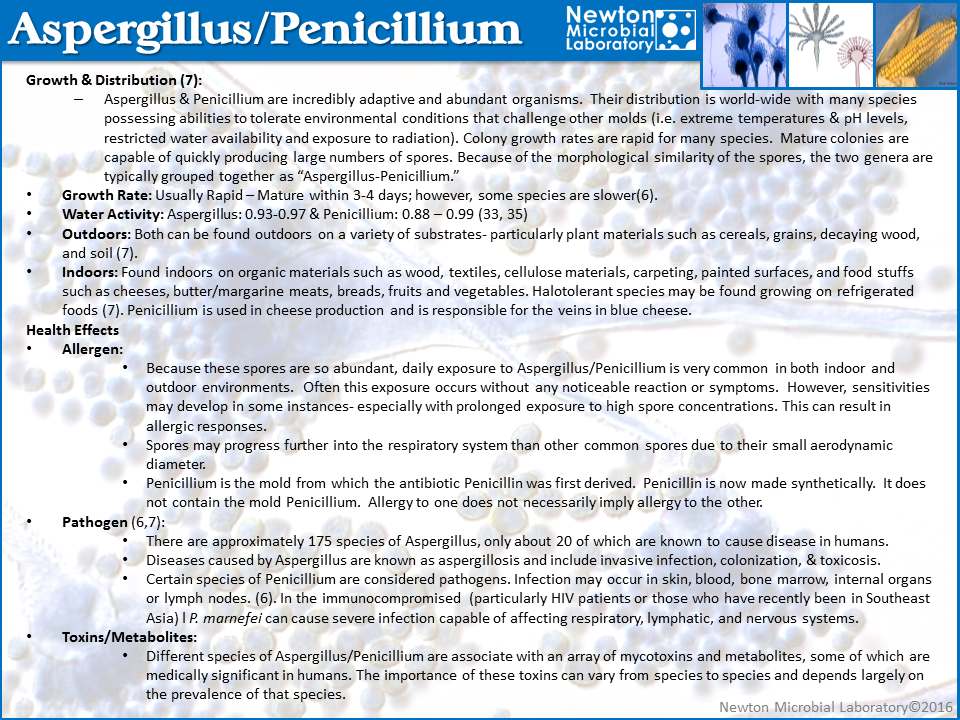Aspergillus and Penicillium
Growth & Distribution (7):
Aspergillus & Penicillium are incredibly adaptive and abundant organisms. Their distribution is world-wide with many species possessing abilities to tolerate environmental conditions that challenge other molds (i.e. extreme temperatures & pH levels, restricted water availability and exposure to radiation). Colony growth rates are rapid for many species. Mature colonies are capable of quickly producing large numbers of spores. Because of the morphological similarity of the spores, the two genera are typically grouped together as “Aspergillus-Penicillium.”
Growth Rate: Usually Rapid – Mature within 3-4 days; however, some species are slower(6).
Water Activity: Aspergillus: 0.93-0.97 & Penicillium: 0.88 – 0.99 (33, 35)
Outdoors: Both can be found outdoors on a variety of substrates- particularly plant materials such as cereals, grains, decaying wood, and soil (7).
Indoors: Found indoors on organic materials such as wood, textiles, cellulose materials, carpeting, painted surfaces, and food stuffs such as cheeses, butter/margarine meats, breads, fruits and vegetables. Halotolerant species may be found growing on refrigerated foods (7). Penicillium is used in cheese production and is responsible for the veins in blue cheese.
Health Effects
Allergen:
Because these spores are so abundant, daily exposure to Aspergillus/Penicillium is very common in both indoor and outdoor environments. Often this exposure occurs without any noticeable reaction or symptoms. However, sensitivities may develop in some instances- especially with prolonged exposure to high spore concentrations. This can result in allergic responses.
Spores may progress further into the respiratory system than other common spores due to their small aerodynamic diameter.
Penicillium is the mold from which the antibiotic Penicillin was first derived. Penicillin is now made synthetically. It does not contain the mold Penicillium. Allergy to one does not necessarily imply allergy to the other.
Pathogen (6,7):
There are approximately 175 species of Aspergillus, only about 20 of which are known to cause disease in humans.
Diseases caused by Aspergillus are known as aspergillosis and include invasive infection, colonization, & toxicosis.
Certain species of Penicillium are considered pathogens. Infection may occur in skin, blood, bone marrow, internal organs or lymph nodes. (6). In the immunocompromised (particularly HIV patients or those who have recently been in Southeast Asia) l P. marnefei can cause severe infection capable of affecting respiratory, lymphatic, and nervous systems.
Toxins/Metabolites:
Different species of Aspergillus/Penicillium are associate with an array of mycotoxins and metabolites, some of which are medically significant in humans. The importance of these toxins can vary from species to species and depends largely on the prevalence of that species.

